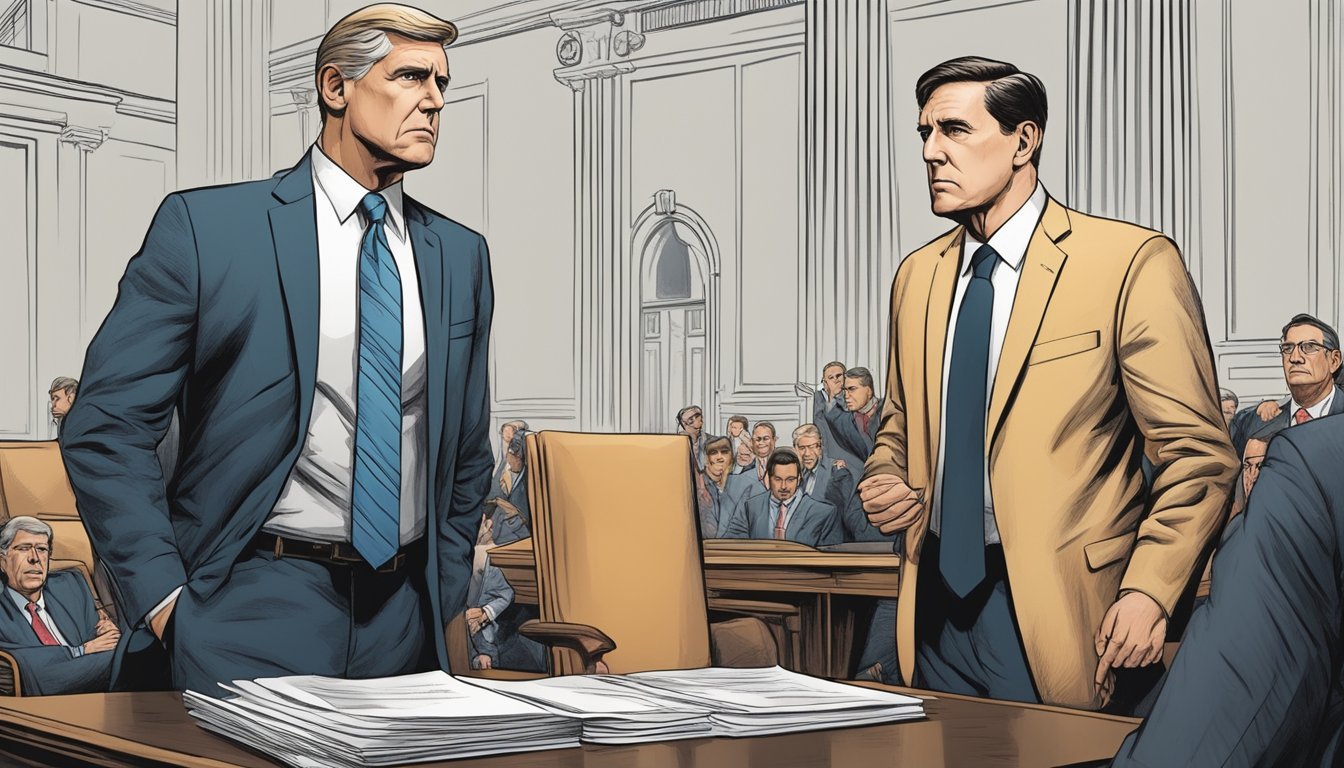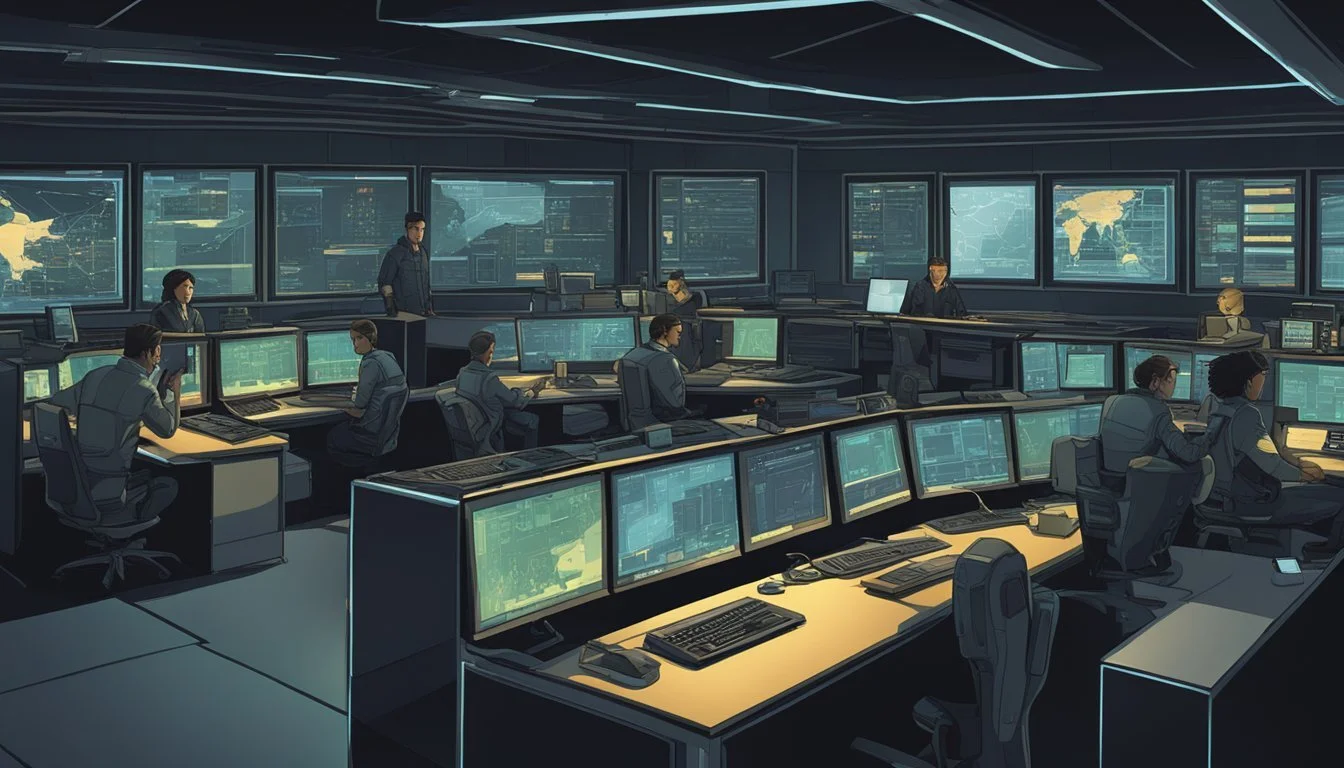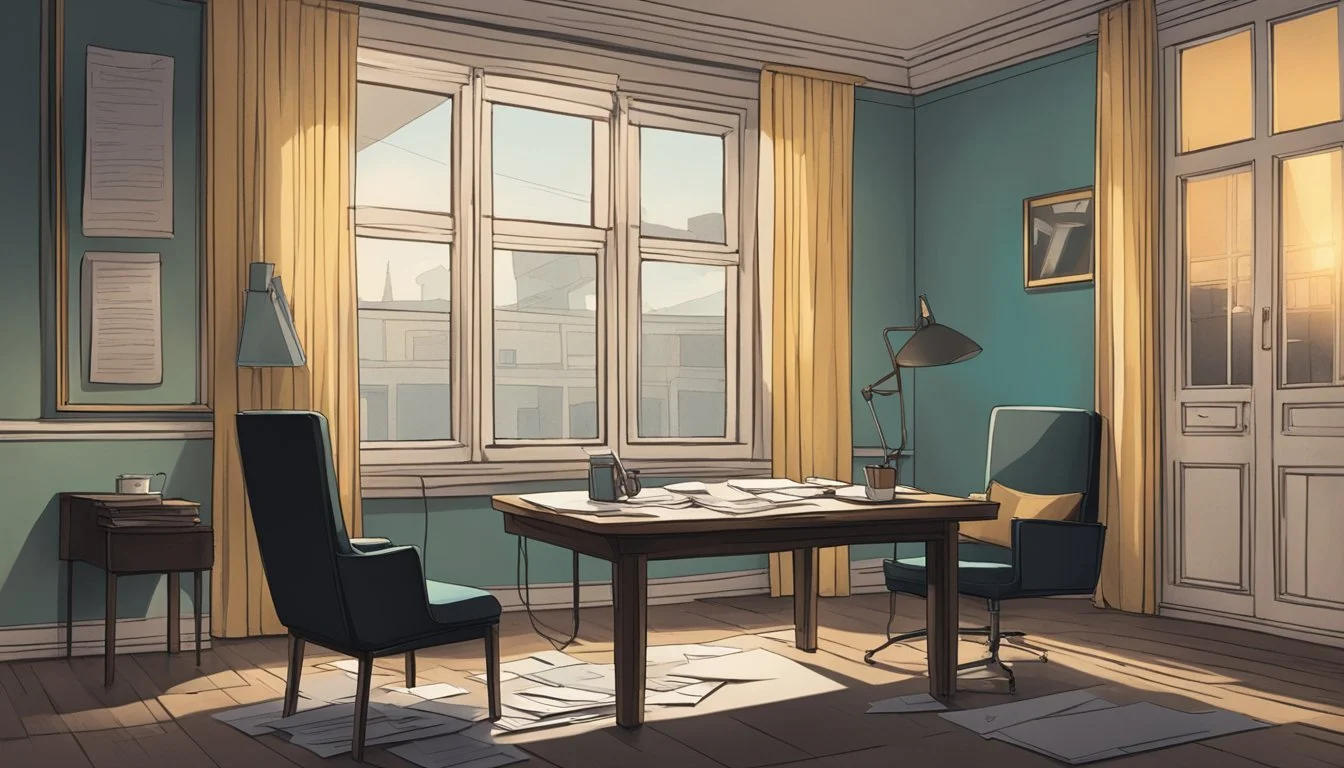The Art of Dialogue: Breaking Down Key Conversations in The Night Agent - Analyzing Pivotal Exchanges
"The Night Agent" captivates viewers with its high-stakes action and intricate plot, but it's the sharp dialogue that truly elevates this Netflix thriller. Based on Matthew Quirk's novel, the series weaves a web of conspiracy and danger through carefully crafted conversations. Each exchange between characters serves multiple purposes: advancing the plot, revealing motivations, and ratcheting up tension.
From terse exchanges in the White House's corridors to whispered revelations in shadowy parking garages, the dialogue in "The Night Agent" keeps audiences on the edge of their seats. The series showcases the power of words as weapons, with characters using language to manipulate, interrogate, and uncover truths. This artful approach to dialogue transforms seemingly ordinary conversations into pivotal moments that propel the story forward.
As the protagonist navigates a treacherous world of espionage and politics, viewers are drawn into a verbal chess match where every word counts. The series demonstrates how skilled writers can use dialogue to create suspense, develop characters, and deliver crucial information without relying solely on action sequences. "The Night Agent" proves that in the realm of action-thrillers, what's said can be just as thrilling as what's done.
Character Analysis and Development
The Night Agent showcases complex character arcs and relationships that drive the plot forward. Key players undergo significant transformations as they navigate dangerous conspiracies and personal challenges.
Peter Sutherland's Evolution
Peter Sutherland starts as a dedicated but overlooked FBI agent. His strong moral compass and keen intellect set him apart. As the series progresses, Peter faces increasingly difficult decisions that test his beliefs and loyalties. Gabriel Basso's nuanced portrayal brings depth to Peter's internal struggles. Peter's growth is evident in his increased confidence and ability to think on his feet in high-pressure situations. His relationship with Rose pushes him to take greater risks and trust his instincts.
Rose Larkin's Journey
Rose begins as a civilian thrust into a world of espionage and danger. Luciane Buchanan skillfully depicts Rose's transformation from a scared outsider to a crucial ally. Rose's tech skills and quick thinking prove invaluable to Peter's mission. Her character arc involves overcoming trauma and finding inner strength. As Rose gains confidence, she becomes more proactive in the investigation. Her growing bond with Peter adds emotional depth to her development.
The Dynamic Duo
Peter and Rose's partnership forms the heart of The Night Agent. Their relationship evolves from wary strangers to trusted confidants. Their complementary skills create a formidable team. Peter's FBI training and Rose's tech expertise allow them to tackle challenges from multiple angles. The duo's chemistry adds tension and depth to their scenes together. Their growing trust in each other mirrors their personal growth throughout the series.
Supporting Cast Dynamics
The Night Agent features a rich tapestry of supporting characters that influence the main plot. Viktor Bala stands out as a complex antagonist with murky motivations. Chelsea Arrington's role as Peter's colleague adds layers to the FBI dynamics. Supporting characters often challenge Peter and Rose's assumptions, pushing them to grow. The interactions between various factions within the government create a tense, unpredictable atmosphere. These relationships highlight the show's themes of trust, loyalty, and the nature of power in Washington.
Plot Breakdown and Story Arcs
"The Night Agent" weaves a complex web of conspiracy, action, and intrigue. The series follows FBI agent Peter Sutherland as he uncovers a far-reaching plot within the U.S. government.
Conspiracy and Intrigue
The story begins with a metro bombing in Washington D.C., setting off a chain of events. Peter, initially an undervalued FBI agent, gets drawn into a shadowy world of political machinations. He discovers connections between the bombing and high-level government officials.
As Peter digs deeper, he uncovers layers of corruption reaching into the White House itself. The plot thickens with each episode, revealing treasonous acts and assassination attempts against key figures.
Pinnacle Events
Season 1 builds tension through a series of critical moments. The metro bombing serves as the inciting incident, propelling Peter into action. A foiled assassination attempt raises the stakes dramatically.
Peter's investigation leads him to uncover plans for chemical warfare. This revelation puts him and his allies in grave danger. The series keeps viewers on edge with intense action sequences and unexpected plot twists.
Climactic Season Finales
Episode 10 of Season 1 delivers a pulse-pounding conclusion. Peter races against time to thwart a coup attempt targeting the President. The finale showcases a thrilling blend of action and suspense.
Season 2 builds on these events, introducing new threats and conspiracies. While specific details of future seasons remain under wraps, expectations are high for more high-stakes scenarios and government intrigue.
Series Production and Direction
"The Night Agent" combines expert direction and high production values to create a gripping spy thriller. The series showcases meticulous attention to detail in its set design, cinematography, and location choices.
Behind the Scenes
Shawn Ryan, creator of "The Shield," spearheaded "The Night Agent" as showrunner. His experience in crafting tense dramas shines through in the series' pacing and plot twists. The production team worked closely with technical advisors to ensure authenticity in depicting FBI procedures and espionage tactics.
Netflix provided substantial resources for the show's production, allowing for elaborate sets and action sequences. The series employed a skilled crew of stunt coordinators, special effects artists, and prop masters to bring the high-stakes world of political intrigue to life.
Visual Aesthetics and Filming Locations
"The Night Agent" utilizes a mix of on-location shooting and studio work to create its atmospheric settings. Key scenes were filmed in Washington D.C., capturing iconic landmarks like the U.S. Capitol and the National Mall. The production also made use of New York City's diverse architecture to stand in for various locations.
The series' visual style emphasizes contrast, using low-key lighting for covert meetings and bright, stark illumination for tense confrontations in government offices. Handheld camera work during action scenes adds to the sense of urgency and danger. The production design team meticulously recreated interior spaces, including a detailed replica of the White House Situation Room.
Thematic Substance and Motifs
"The Night Agent" weaves together complex themes and motifs that elevate it beyond a typical action-thriller. The series explores power dynamics, espionage symbolism, and moral dilemmas faced by its characters.
Government and Power
The show delves into the intricate workings of government institutions and the corridors of power. The White House serves as a central location, highlighting the high stakes involved in national security decisions.
FBI agents and Secret Service personnel navigate a web of political intrigue, showcasing the complex relationships between different government agencies.
The presidential election storyline adds tension, illustrating how power can be both a goal and a vulnerability. Characters like the White House Chief of Staff demonstrate the influence wielded by those in key positions.
Symbols of Espionage
"The Night Agent" employs classic espionage symbols to create a rich, atmospheric world. The Foxglove operation represents the hidden nature of covert missions and the layers of secrecy in intelligence work.
Surveillance technology, coded messages, and clandestine meetings in shadowy locations reinforce the spy genre's iconic elements.
The series uses these symbols to build suspense and highlight the constant danger faced by its characters. Double agents and intelligence brokers embody the theme of deception central to espionage narratives.
Morality and Choice
Characters in "The Night Agent" frequently grapple with moral dilemmas, testing their ethical boundaries. The protagonist's strong moral compass contrasts sharply with the actions of assassins and corrupt officials.
Trauma from past experiences shapes characters' decisions, adding depth to their motivations and choices.
The series explores how individuals maintain their integrity in a world of shifting loyalties and national security threats. It raises questions about the price of doing the right thing in morally ambiguous situations.
Comparative Analysis of Seasons
"The Night Agent" has shown significant growth across its seasons, with each new installment bringing fresh challenges and deeper character development. The show's evolution and potential future directions are worth exploring.
Seasonal Evolution
Season 1 of "The Night Agent" introduced viewers to a high-stakes world of espionage and political intrigue. The plot centered on an assassination attempt and a complex terrorist plot involving chemical weapons. The pacing was tight, with action sequences balanced by tense dialogue.
Season 2 built on this foundation, delving deeper into the characters' backgrounds. The threat level escalated, with the protagonists facing more personal challenges. Character relationships became more nuanced, and the conspiracy expanded in scope.
Predictions for Future Seasons
If renewed, Season 3 of "The Night Agent" is likely to continue raising the stakes. Fans can expect:
More international locations
Deeper exploration of secondary characters
A larger, more intricate conspiracy
The show may introduce new villains with ties to previous seasons. Action sequences will likely become more elaborate, reflecting the increased budget typically allocated to successful series.
Netflix's data-driven approach suggests future seasons will likely focus on elements that resonated most with viewers in earlier installments.
Viewer Engagement and Responses
"The Night Agent" sparked intense fan discussions and reactions across social media platforms. Viewers dissected plot elements and character developments, sharing theories and analyzing the show's impact.
Fan Theories and Speculation
Conspiracy theorists had a field day with "The Night Agent," crafting elaborate scenarios about hidden government plots. Many fans speculated about potential twists in Season 2, particularly regarding the mysterious events at Camp David. Some theorized about characters going AWOL or having secret allegiances.
Online forums buzzed with debates about character motivations and backstories. Viewers scrutinized every detail, from subtle facial expressions to background props, searching for clues. This led to a rich tapestry of fan-generated content, including detailed character analyses and plot predictions.
Cultural Impact and Reception
The series made a significant splash in the streaming landscape. Its binge-worthy nature led to widespread viewer engagement, with many completing the entire season in a matter of days. This rapid consumption sparked discussions about "Netflix Series fatigue" and "buyer's remorse" among some viewers.
Critics praised the show's pacing and plot twists, while some pointed out its restrained approach to typical action-thriller elements. The series' popularity led to increased interest in political thrillers and government conspiracy storylines across various media platforms.
Social media trends related to "The Night Agent" spiked during its release, with hashtags and memes proliferating rapidly. The show's themes resonated with audiences, sparking conversations about trust in government institutions and the nature of loyalty in high-stakes situations.







